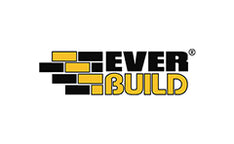How to Repair Your Leaking Shed Roof
Quick answer: Find the entry point on a dry day, clean and dry the area, then patch or replace the covering. For felt, use cold-applied bitumen patching or re-felt. For EPDM, use EPDM primer and patch. For corrugated sheets, renew fasteners and sealing washers. Finish with drip edges and sound fascias, then prevent future leaks with maintenance and ventilation.
1) Diagnose the Leak Properly
Water can travel along rafters and drip far from the entry point. Remove stored items, lay a dust sheet, and inspect during or just after rain if safe—or simulate with a gentle hose while someone watches inside.
Common leak patterns
- Edge ingress: Torn felt, missing drip edge, or wind-lifted laps at eaves/verge.
- Fastener leaks: On corrugated roofs, perished sealing washers or loose screws.
- Membrane damage: Punctures/splits in felt or EPDM.
- Condensation: Morning drips and musty smell; fix with ventilation, not sealers.
Tip: Chalk suspect areas on top. Inside, follow damp trails uphill to the highest wet point.

Tools & Materials
Choose based on your roof type.
- Ladder, gloves, utility knife, hammer
- Roofing nails/screws with sealing washers
- Caulking gun; bitumen roof adhesive/mastic (for felt)
- Replacement roofing felt or mineral felt
- EPDM cleaner/primer, EPDM patch kit, hand roller
- Replacement corrugated sheets (bitumen or metal)
- Drip edge trims
- Measuring tape, straightedge, brush/roller
- OSB/plywood for deck repairs
- Timber preservative for exposed wood

Safety & Best Timing (UK)
- Avoid high winds, rain, frost, or slippery surfaces; use a stable ladder.
- Do not step between rafters if the deck may be weak.
- Most adhesives/primers need dry conditions and temperatures above about 5 °C.
- UK: best windows are late spring to early autumn; in winter, make temporary patches.
Repairing a Felt Roof (Mineral Felt / Shed Roll)
Patch localised damage; re-felt if the covering is brittle or cracked in multiple places.
Local Patch (cold-applied)
- Brush off grit; let the area dry.
- Cut back to sound felt.
- Cut a patch at least 100 mm larger all round and round its corners.
- Bed in cold-applied bitumen adhesive; press/roll firmly.
- Seal edges with bitumen mastic; optionally add a larger cap patch.
Full Re-Felt
- Strip old felt and fixings.
- Replace any soft/swollen OSB/ply; treat bare timber with preservative.
- (Optional) Underlay felt with 50 mm laps, fixing from eaves upward.
- Lay mineral cap sheet with 75–100 mm side laps and 100–150 mm end laps; bond laps and nail along the top of each course.
- At ridge, overlap both sides and add a 300 mm ridge strip.
- Fit drip edges so water clears the fascia; refit verge battens to resist wind lift.

Repairing an EPDM Rubber Roof
Use EPDM-compatible products only.
Small Puncture Patch
- Clean and dry with EPDM cleaner.
- Prime with EPDM primer until tacky.
- Apply self-adhesive EPDM patch (75–100 mm larger than damage) with rounded corners.
- Roll thoroughly; edge seal if specified.
Edge or Seam Repairs
- Lift loose edge; clean and prime both faces.
- Apply EPDM seam tape; roll firmly.
- Add a cover strip in high-stress areas.
Replace if: the sheet is shrunken/chalked or riddled with patches.

Repairing Corrugated Bitumen or Metal Sheets
Fastener & Washer Renewal
- Identify drips near fasteners.
- Replace with roofing screws including new sealing washers; drive square and snug.
- Seal laps with compatible lap sealant if wind-driven rain is an issue.
Cracked or Blown Sheets
- Remove damaged sheet and fixings.
- Install new sheet from the prevailing wind side.
- Follow manufacturer side-lap (often 1 corrugation) and end-lap (typically 150–200 mm) rules.
- Fit foam eaves fillers if specified.
Repairing Felt Shingles
- Re-bond lifted tabs with bitumen adhesive; weight until set.
- Replace cracked shingles by easing out nails, sliding in a new piece, and re-nailing on the nailing line.
- Re-cap the ridge with pre-cut ridge shingles, bonded and nailed.

Edges, Flashings & Timber Repairs
Drip Edges & Verges
A simple L-shaped drip edge sends water clear of the fascia and into the gutter. Run the membrane over the drip edge.
Fascia & Deck Repairs
- Probe eaves boards and fascia; replace any soft timber.
- Use exterior-grade boards and treat exposed end-grain.
Abutments
Where the shed meets a wall/fence, install flashband (felt) or compatible flashing (EPDM/metal) so water cannot run behind the covering.

Typical Costs & Time
| Job | Materials (typical shed) | DIY Time | Notes |
|---|---|---|---|
| Patch small felt split | £10–£25 | 30–60 mins | Cold-applied adhesive + patch. |
| Full re-felt (6×4 to 8×6) | £45–£120 | 2–4 hrs | Include nails and adhesive; drip edges recommended. |
| EPDM puncture patch | £20–£40 | 45–90 mins | Use EPDM primer and patch kit. |
| Replace 2–3 corrugated sheets | £40–£90 | 1–2 hrs | Use new screws with sealing washers. |
| Shingle replacement (10–20 tabs) | £20–£50 | 1–2 hrs | Bond lifted tabs and replace cracked pieces. |
Note: Prices are indicative UK retail and vary by brand and size. If the deck is rotten, budget for OSB/ply (£20–£40 per sheet) and preservative.
Prevention & Maintenance
- Fit drip edges and secure verge battens to prevent wind-lift.
- Keep the roof clear of leaves and branches.
- Ventilate the shed to reduce condensation.
- Treat exposed timber and cut ends with preservative.
- Inspect annually and after heavy storms.
Upgrade option: A one-piece EPDM with perimeter trims is a durable “fit and forget” solution.

Recommended Products (UK)
For Felt Roofs (patches & full re-felt)
- Bitumen Roof Adhesive (cold-applied) — bonds patches and laps on mineral felt. Choose brush-on for areas, cartridge for edges.
- Bitumen Roof Mastic / Sealant — edge sealing and small crack filling; ideal under lifted tabs and ridge strips.
- Mineral Roofing Felt (cap sheet) — heavier mineral finish lasts longer; pair with underlay on larger sheds.
- Self-adhesive Flashing Tape — quick abutment flashing to walls/fences; compatible with felt.
For EPDM Rubber Roofs
- EPDM Cleaner & Primer — essential surface prep before any tape/patch (do not substitute bitumen).
- Self-adhesive EPDM Patch Tape — rounded-corner patches for punctures and small splits.
- EPDM Seam/Joining Tape — Option 1 | Option 2 — re-bond loose seams and perimeters; use with primer and a hand roller.
- EPDM Contact Adhesive — for perimeter and full-sheet bonding when replacing membranes.
For Corrugated Bitumen/Metal Roofs
- Roofing Screws with Sealing Washers — renew perished washers and loose fixings (choose correct length for purlin thickness).
- Butyl Lap Sealant — Data | Buy — improves weather-tightness at side and end laps, especially on exposed sites.
- Replacement Corrugated Sheets (bitumen) — Onduline Classic — match existing profile for easy overlap.
- Replacement Corrugated Sheets (metal) — Option 1 | Option 2
- Foam Eaves/Vent Fillers — block wind-driven rain and birds while maintaining airflow where designed.
Edge Protection, Timber & Deck Repairs
- EPDM Edge/Drip Trims — PermaRoof Edge Trim | Jewson | Rubber4Roofs — stop water curling back under; fit at eaves before the membrane.
- Metal Drip/Eaves Flashing — Option 1 | Option 2
- Exterior-grade OSB3 / Plywood — for replacing soft or swollen roof decking.
- Timber Preservative (clear or brown) — Option 1 | Option 2 — treat fascias, bargeboards and any cut edges before re-covering.
Nice-to-Have Kits & Tools
- Roofing Hand Roller — Option 1 | Option 2 — ensures full contact on EPDM tapes/patches and felt patches.
- Heavy-duty Utility Blades — clean cuts on felt and EPDM improve lap seals.
- Cartridge Gun — Heavy-duty 400 ml gun (OX Pro / similar) — for bitumen mastic and lap sealants.
FAQs
Is my leak actually condensation?
Morning drips and a musty smell with no obvious holes suggest condensation. Improve ventilation and avoid drying laundry inside.
Can I repair in winter?
Make temporary patches if it’s dry and above freezing; permanent work is best above 5 °C.
Do paint-on roof coatings work?
They can bridge hairline cracks but won’t fix failed laps or rotten decking. Treat as a stop-gap.
When should I replace instead of repair?
If more than about 20–30% is cracked or patched, or the deck is soft, replacement is usually better.



















